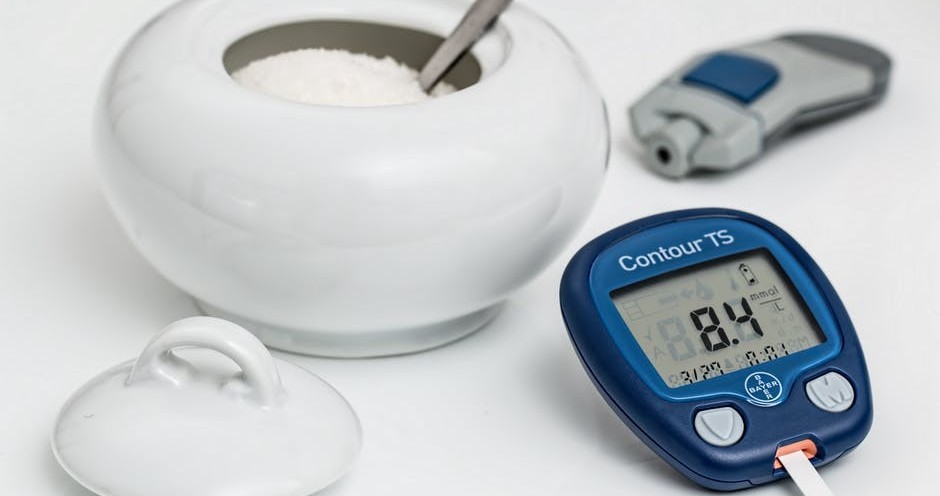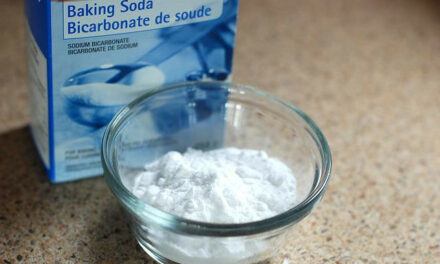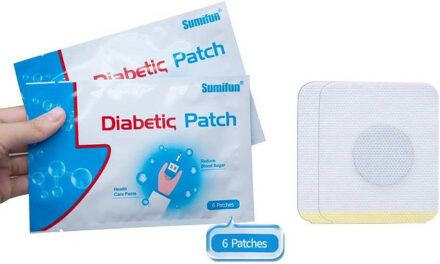Diabetes Mellitus (DM) is a disease caused by a high level of sugar in the bloodstream. This occurs due to a low level of insulin hormone or resistance to insulin hormone which regulates the blood sugar level. If not managed properly, DM may lead to complications such as damage to eyes, kidneys or nerves.
According to the World Health Organization, 422 million adults had DM in 2014. That accounts for 6% of the world population.
Pre-diabetes is a condition in which blood sugar level is slightly higher than normal but not high enough to confirm type 2 DM. So, doctors consider pre-diabetes as a warning sign for DM.
But the good news is, it is always possible to reverse pre-diabetes status from developing into type 2 DM.
In the US, about 86 million people over 20 years have pre-diabetes. Worldwide, one out of three people has pre-diabetes.

Pre-diabetes has no specific signs or symptoms. A few features suggestive of the condition are:
- Discoloration of skin on the neck, groin, knuckles, armpit, etc.
- Unexplained tiredness
- Excessive thirst
- Frequent urination
- Unexplained weight loss
- Blurred vision
- Slow healing wounds, cuts sores and recurring infections
- Dry mouth
- Itchy skin
The risk factors for pre-diabetes are as same as for type 2 DM. They are as follows.
1. A family history of type 2 DM among your parents or siblings is a significant risk factor.
2. Overweight; especially increase the waist measurement.
The healthy Body Mass Index (BMI) is between 18.5 – 24.9 Kg/m2. BMI over 25 Kg/m2 increases pre-diabetes and diabetes risk.
Similarly, a waistline of a >40 inches in a male and >35 inches in a female increase the risk of pre-diabetes and type 2 DM.
3. Low level of physical activities and sedentary lifestyle is a risk factor
4. Smoking increases the risk of pre-diabetes and diabetes.
5. Polycystic ovarian syndrome increases the risk of having pre-diabetes due to increased insulin resistance in the female.
6. Gestational DM during pregnancy
increases the risk of developing pre-diabetes and type 2 DM later in life.
7. Race/ Ethnicity
Some races and ethnic group [Dr YA2] are more prone to get pre-diabetes and type2 DM.
Examples –African Americans, Mexican Americans, American Indians, Native Hawaiians, Pacific Islanders and Asian Americans.
8. Age over 45 years
As we grow older, the risk of developing pre-diabetes and type 2 DM also increases.
9. Sleep disorders may cause insulin resistance, which may lead to pre-diabetes status.
10. High blood pressure and high cholesterol levels are also risk factors.
Pre-diabetes status has no symptoms or signs. Doctors commonly find it accidentally during regular medical check-ups or when they investigate blood for another health condition.

The tests to diagnose pre-diabetes are the same as for type 2 DM. It is essential to carry out the tests in a slandered way for accurate diagnosis.
1. Fasting blood glucose level
It is measured after 8-10 hours of fasting. The results interpret as follows.
- o <100mg/dL – normal blood sugar level
- o 100 – 125mg/dL – impaired fasting blood sugar level (pre-diabetes)
- o >125mg/dL – may consider as DM (need two values in separate occasions to confirm)
2. Oral glucose tolerance test
Following 8 hours of fasting, can take the first blood sample. Then you have to drink a glucose solution, and then take another blood sample after two hours. [Dr YA3] Test values interpret as follows:
- o <140mg/dL – normal sugar level
- o 140 – 199mg/dL – impaired glucose tolerance (pre-diabetes)
- o >200mg/dL – diagnose as DM
3. Glycated hemoglobin level (HbA1C)
This test reflects the average blood sugar level in our blood during the last 3 months. The test result interprets as below:
- o <5.6% we consider as normal
- o 5.7 – 6.4% consider as pre-diabetes
- o >6.5% it confirms DM
Results from the above blood tests can confirm one’s diabetes status.
Now the question is “I have pre-diabetes status. Would I get diabetes in the near future?”
The answer is “NO”. The American Diabetes Association states that “It is possible to prevent pre-diabetes from developing into type 2 DM by modifying our lifestyle”.
Let us find out the ways to reduce the risks of developing DM from pre-diabetes status or normal blood sugar levels.
- Healthy food habits
We have to plan our diet well. The plan should include the reduction of high calorie and fatty food intake. They are butter, full cream milk, fast food, biscuits, cakes and any other type of ‘junk food’. Instead, increase the consumption of high fiber vegetables, fruits, green leaves and whole-grain meals.
- Regular physical activities
Regular moderate exercises such as brisk walking, cycling and swimming at least 30 minutes per day will help you to prevent DM.
When we do exercises, our cells need more glucose. Because of the requirement, glucose molecules go inside the cells with little help of insulin. That will lead our body to become less insulin resistance.
Physical activities also help us to reduce stress and feel fresh.
- Weight reduction
If you are overweight or obese, Changes to lifestyle, healthy food and exercises will inevitably lead to weight reduction. Weight loss enhances insulin action and reduces insulin resistance.
Reduction of 5 – 10% of your body weight will do a great job to reduce the risk of developing pre-diabetes and DM.
- Reduce stress
Long term stress triggers hormones that increase our appetite resulting in many bad outcomes. Meditation, music, travelling, exercises, etc. could help with reducing stress levels.
- Maintaining blood pressure and cholesterol level healthy is also vital to prevent developing pre-diabetes and type 2 DM.
If we adhere to a healthy lifestyle, we can prevent developing type 2 DM from pre-diabetes in the majority of cases. Some would be even able to reverse pre-diabetes status to healthy blood glucose levels.









Hi Shani,
I appreciate this informative article on the difference between pre-diabetes and diabetes. I have most of the risk factors you’ve listed and have been diagnosed as pre-diabetic at various times over the years. Currently, my blood sugar levels are in the normal range due to vigilance with my diet. This post serves as an excellent reminder to stay on top of things because diabetes is such a debilitating disease. Thanks for the useful info!
Hi Linda,
Thanks for stopping by, sharing your story and writing your comment.
We are pleased that you found the article useful.
Take care.
The difference between diabetes and pre diabetes is easy, straight forward and simple just as there names. Diabetes is a disease caused by a high level of blood sugar, this usually occurs due to the low insulin hormones. While pre diabetes is the when the blood sugar is a little above normal.
Hi Donas,
Thanks for stopping by and commenting.
Best wishes.
I would add that when you want to do your diabetes analysis, it is advisable that after 17 o’clock you do not eat or drink water; the next day you make your first set of analyzes. Am I correct?
I know diabetes is a dangerous disease and it is advisable to see a doctor rather than trying to treat yourself. A change in diet, movement, weight loss are prevention methods, as you mentioned in the article.
Thanks for posting.
Hi Carmen,
Thanks for sharing your experience with prediabetes and diabetes.
The current guidelines by The European Society of Cardiology recommend a minimum of 8-hour fasting, but some practices recommend 10 – 12 hours fasting as the requirement. Therefore, if your plan is to check the glucose level at 7 am (next day), you need to start fasting only between 7 – 9 pm, not from 5 pm.
Hope this helps.
Hello Shani,
Diabetes is a condition that is growing at a very alarming rate in our society. This is partly due to people unhealthy lifestyle, and nonchalance about the type of diet individuals indulge in.
It is a good job your doing by sensitizing people about risk factors which can cause diabetes. I wish a lot more people will take and make use of this information. Type 2 diabetes is easy to manage, if individuals with this condition are willing to exercise discipline and work on their lifestyle.
Hi Louis,
Thanks for your kind words. I am pleased that you found the article useful.
Regards.
So nice to have an easily consumable explanation of how to differentiate between diabetes and pre-diabetes
Thank You very much for sharing such informative secrets with all the necessary information. From your article, I was able to deduce that I am presently suffering from main diabetes according to the symptoms I am seeing presently.
Thanks for providing lasting solution and cure to this
Hi there,
Thank you for your comment.
Please let us know if you have any specific questions require answering.
Kind regards.
This is a good article as its detailed the pre diabetics and the diabetic stages of the disease.
Its a well researched post and I believe it going to have a really good impact on the readers. I for one have really gained a lot from this post. I will surely come back to your site to read about other topics that are well researched and with the critical importance of the wellbeing of our general health.
Hi Olanike,
We are glad that you found the article useful.
I have added links to a few more interesting articles below which you might like to read at some stage.
Diabetes myths
Symptoms of diabetes
Early signs of diabetes in women
Early signs of diabetes in men
Diabetes during pregnancy
Happy reading and sharing!
Dear Shani,
This is an awesome article on diabetics. I do not know much about prediabetes because of all that is common in diabetics but now I understand the difference and how to identify diabetes early at the pre-diabetes stage itself.
My question is can a teenager or a youth be diagnosed with diabetes?
I will be looking forward to your reply. Thanks for sharing this informative and educative post.
Lok
Dear Lok,
Thanks for the question. Sorry for the delay in reply – your message has slipped through the cracks somehow.
Yes, teenagers can be diagnosed with diabetes. Most of the time diabetes diagnosed in childhood and younger ages are Type 1. Some people with Type 2 Diabetes are diagnosed early as in childhood, although Type 2 is most commonly diagnosed in adults over 40 years.
To put into perspective, in the US, approximately 18,000 people under 20 years were diagnosed with Type 1 Diabetes in comparison to Approximately 5,000 diagnosed with Type 2 (2011/12 Stats).
The trend is upward, and the Type 1 prevalence rises by 2% and Type 2 by 5%, annually.
I hope this clarifies the answer to your question.
Kind regards.
P.S. I have touched on the question in the article about the Difference between Type 1 and Type 2 Diabetes.
Thanks for writing out this lovely article and I must say it is a must for everyone to read and digest. I really gained some important things in this article about pre-diabetes and diabetes. Every of your post has been helping and informative to me. I would love to share this post with friends. Thanks for the post.
Hi there,
Thanks for your kind words and we are glad you found the information useful.
Have you got a chance to read our article about the best exercises for diabetes? You may find that is useful too.
Please feel free to share the post with anyone. You may join the dialogue on Facebook and Twitter too.
Best wishes.
Really good article.
Thank you.